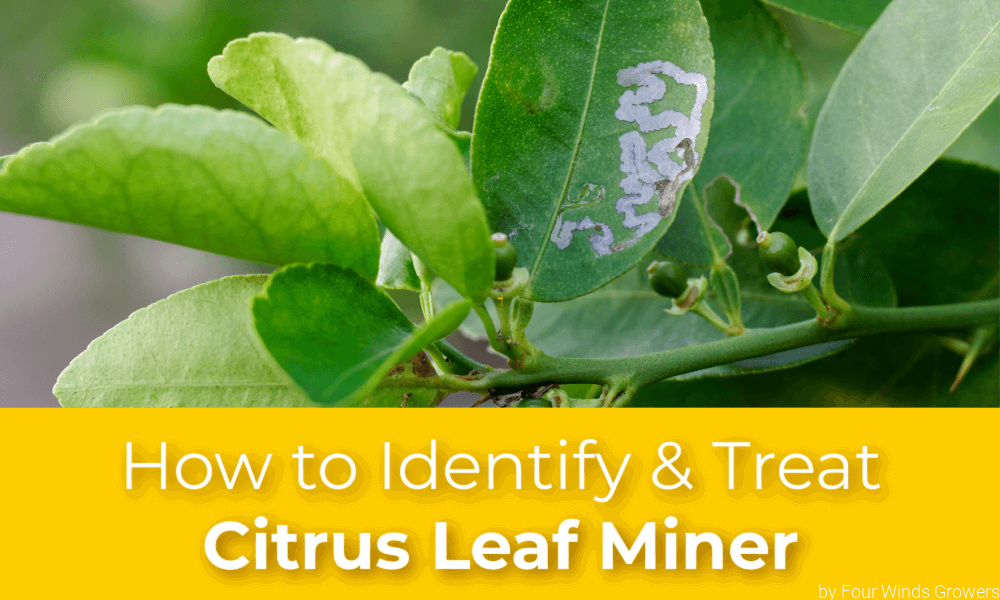Whether you are simply looking for an exciting new challenge or this is your only option, citrus is one of the most rewarding houseplants you can grow. Read on for more on growing citrus trees as house plants.
The majority of house plants are native to the tropics which makes them highly adaptable to our warm indoor climate. Citrus trees are no exception. For all of our plant-y people looking to get into the rare indoor plant game, look no further! Citrus trees make for a beautiful piece of greenery that will brighten your space and are easy to grow house plants, but there are a few key elements that should be considered when growing citrus indoors.
Variety: While you can keep any citrus tree in a pot, we recommend a tree that sets smaller fruit that won't pull too much energy from the plant. It is also good practice to remove flower buds in the first season or two while the trees are establishing themselves in their new homes. Varieties like Thai Lime, Fukushu Kumquat, Calamondin, and Meyer Lemon are all excellent choices for indoor growing. If you are looking for a variegated citrus, Centennial Variegated, Variegated Calamondin / Calamansi, and Variegated Eureka Pink lemon are the trees for you.
Light & Location: Indoor citrus trees love the sun and will need roughly 8-12 hours of sunlight each day to grow healthy and productively. Choose a south-facing window with unobstructed light for best results. If you are planning on growing in a space with less than 5 hours or if you get less than 5 hours of sunlight during the winter months, you may have to supplement light with full spectrum grow lights. T5 fluorescent bulbs in the 6500k color temperature are ideal for most indoor growing. These lamps should be kept 1'-2' above the trees at all times to provide adequate light but also to prevent light burn. LED bulbs are another great solution so long as they are full-spectrum. While more expensive, LEDs provide deeper penetration into the tree's canopy making for a fuller tree. Lights can also be a great source of heat depending on the wattage so keep this in mind when choosing your light setup. Typically, the higher the wattage, the higher the heat output so avoid placing your lights too close to your plants if you choose a high wattage bulb.
Temperature: Room Temperatures of around 55°F-85°F are ideal for indoor citrus growing. Try not to allow temperatures to fall lower than 32°F as this will start to cause problems for your tree. Note: During the cold months you want to keep your tree in a warm room, but never by the heating vent itself.
Humidity: The humidity in the room is also very important for your tree's health. A common approach to this challenge is to elevate the pot on some kind of small rocks or pebbles in a saucer to increase drainage and airflow. This combined with misting the tree foliage with a spray bottle during those dry winter months will also help with humidity. The goal here is not to soak your tree as this can encourage fungal growth but rather just to maintain a similar humidity to the outside world. The introduction of fans will also greatly improve airflow if you may have overdone it with the moisture.
Soil: Choose a well-draining citrus/cactus soil mix and cut in about 1/3 compost. This should provide the right balance of drainage, soil retention, and aeration that your tree will need to flourish. At the base of the pot, you will want to cut in about 1/3 more perlite to the mix to increase the drainage and aeration at the bottom of the pot. This will also naturally air prune the roots at the bottom of the pot which will help prevent root rot. Avoid using native soil/dirt from your yard is not recommended. The use of gravel at the base of the pot can also negatively impact drainage over time.
Water: Citrus trees need regular watering during summer, but do tolerate temporary dryness. On the other hand, they do not tolerate constantly wet soil. A drain rock saucer as mentioned above is highly recommended not only for the humidity benefits but the drainage as well. You want to check your soil moisture level often by sticking your fingers a few inches into the soil to see if it is dry. A deep watering once a week is a safe place to start but of course, every climate will vary and you will likely need to water twice a week in the summer when the tree is receiving more sun and actively growing.
Fertilization: There are a couple of options for fertilizing indoor citrus trees such as organic slow-release fertilizers, top dressed fertilizers that should be watered in, and liquid fertilizers. All of which should be applied according to the label and weekly from spring to fall. Our Romeo fertilizer is a great option and with a tablespoon diluted into a gallon of water and applied in the spring, summer and fall should be exactly what you need for your tree to thrive.
Enjoy: There is something about an indoor citrus tree that not only brightens a space but has a positive mood-boosting quality to it. Did I mention that you can get tasty fruit from them too! How many other house plants can say that?
Indoor/Outdoor? Want to transition your citrus tree outdoors? Check out our How to transition your tree outdoors in the spring blog to learn more.
Learn more about growing Citrus Trees indoors
Author: Israel Osuna




